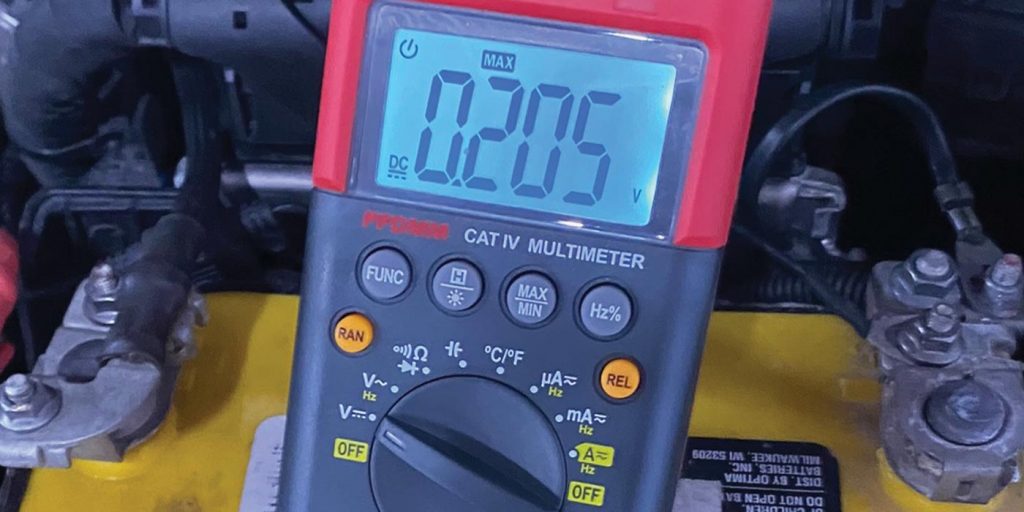Picture your local freeway. When the traffic is light, the traffic flows at the same speeds, even if there is a lane closure. As the number of cars increases for rush hour, the speeds slow down. A lane closure can cause traffic to come to a standstill.
In this example, the cars during rush hour are like a load and power in a starter motor on a circuit. The lane closure is like a bad connection or damaged wire. With light traffic loads, the speed of the traffic will not slow down as lanes merge. But, during rush hour, the speeds drop.
The measurement of voltage is like the speed of the traffic. If loads are light, the voltage does not drop. As electrical loads in a circuit or traffic increase, the speed of the vehicles or the voltage drops, just like speed during rush hour.
If a connection is like a superhighway with multiple lanes, the speed or voltage does not drop as traffic or electrical loads increase. Basically, this is a simple way to imagine Ohm’s law. Voltage drop testing is like having traffic cops on one side of the freeway running radar before and after a lane closure with radar guns.
When performing a voltage drop test, you are measuring the amount of voltage dropped through part of the circuit. It is a measurement of the energy lost trying to push energy through a bad connection.
The most common test for voltage drop is at the positive battery cable. If you were to measure the resistance through the cable or connector, it might measure within specification. When you measure the voltage at the post on the starter, the voltage might be the same as at the battery. Voltage drop testing will reveal what is happening inside the circuit when it is under load.
To measure voltage drop, you connect your voltmeter to the battery terminal and the post on the starter. When you turn your meter on, the display should show zero volts. Use your min/max function on the meter. Next, crank the engine. If the max voltage is voltage is greater than 0.5 volts, it is an indication that there is a problem with the cable or the connections at the battery or starter. Voltage drop testing can also be used on ground circuits and other high draw circuits like fuel pumps, headlights and blower motors.
VOLTAGE DROP TEST PROCEDURES FOR A FUEL PUMP
1. Address the negative side of the circuit first, then the positive side.
2. Connect one digital voltmeter test lead to the negative battery terminal and the other to the negative terminal at the fuel pump.
3. The fuel pump circuit must be energized to properly test it. Energize the fuel pump relay and power the fuel pump circuit.
4. If the negative circuit is in good condition, the voltage drop measured should be 0.5V DC or less. Larger voltage drop readings indicate a problem. Damaged or corroded vehicle wiring or harness connectors are likely sources of the problem.
5. Repeat the voltage drop test on the positive side of the circuit. Connect one digital voltmeter probe to the positive terminal on the battery and the other to the positive fuel pump terminal.
6. Energize the fuel pump relay and power the fuel pump circuit.
7. As with the ground circuit, voltage drop readings larger than 0.5V DC indicate system wiring or connector issues.
Article courtesy Underhood Service magazine.














